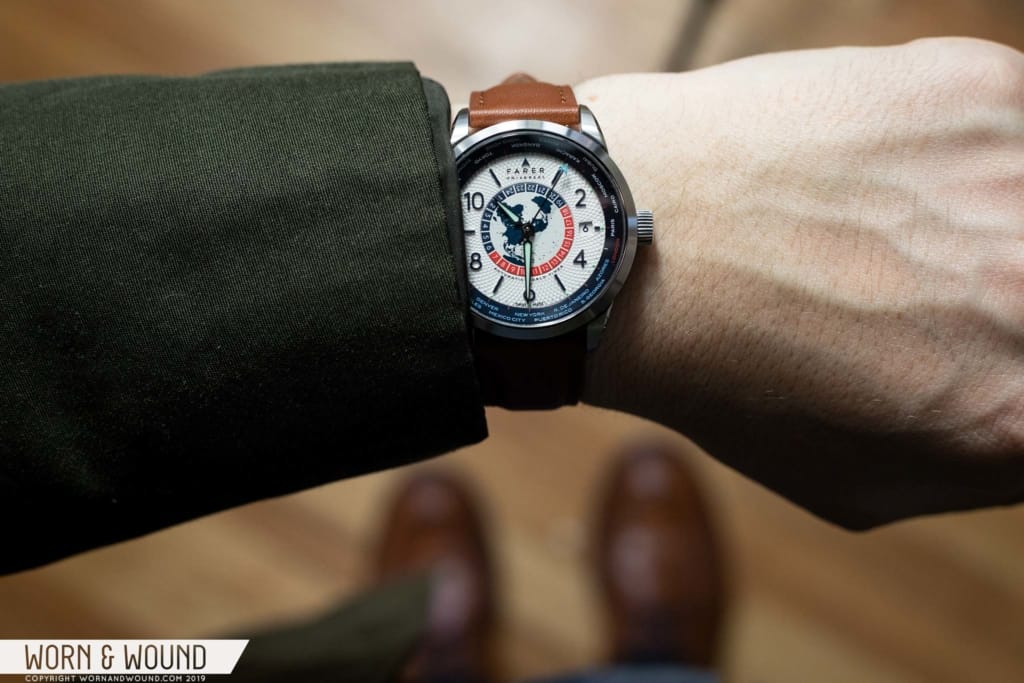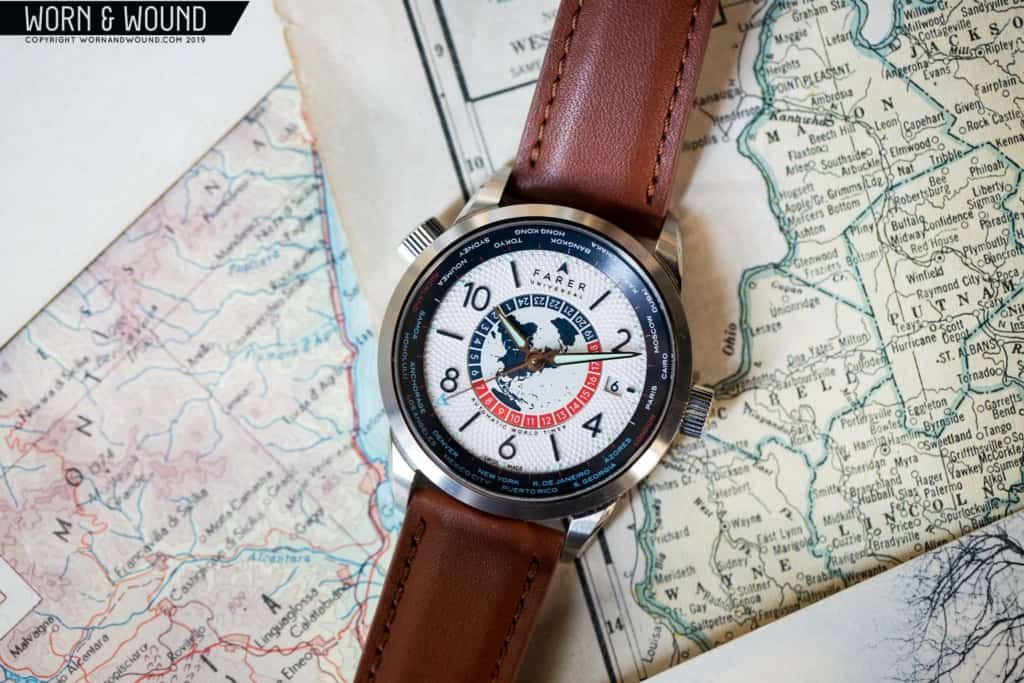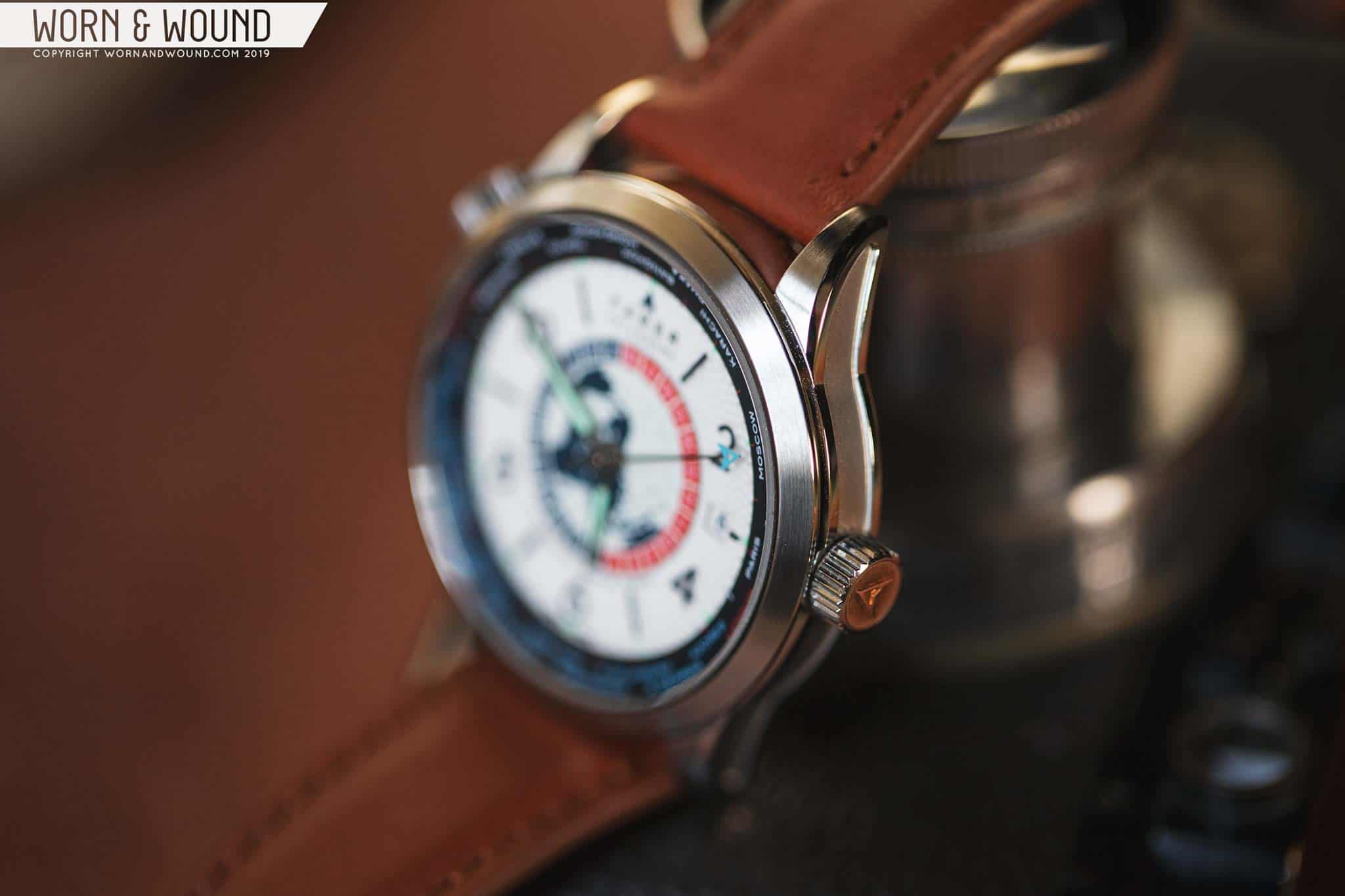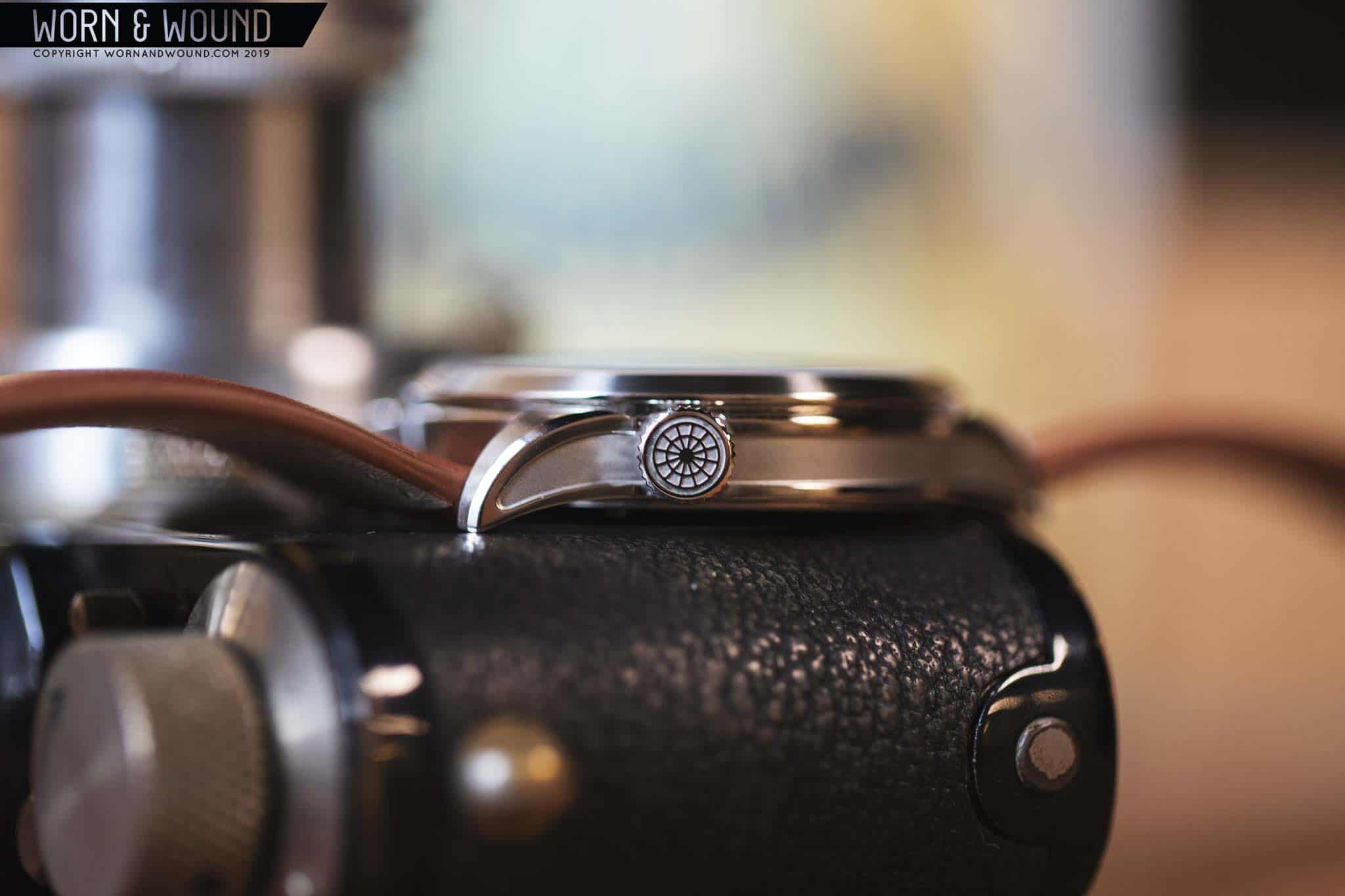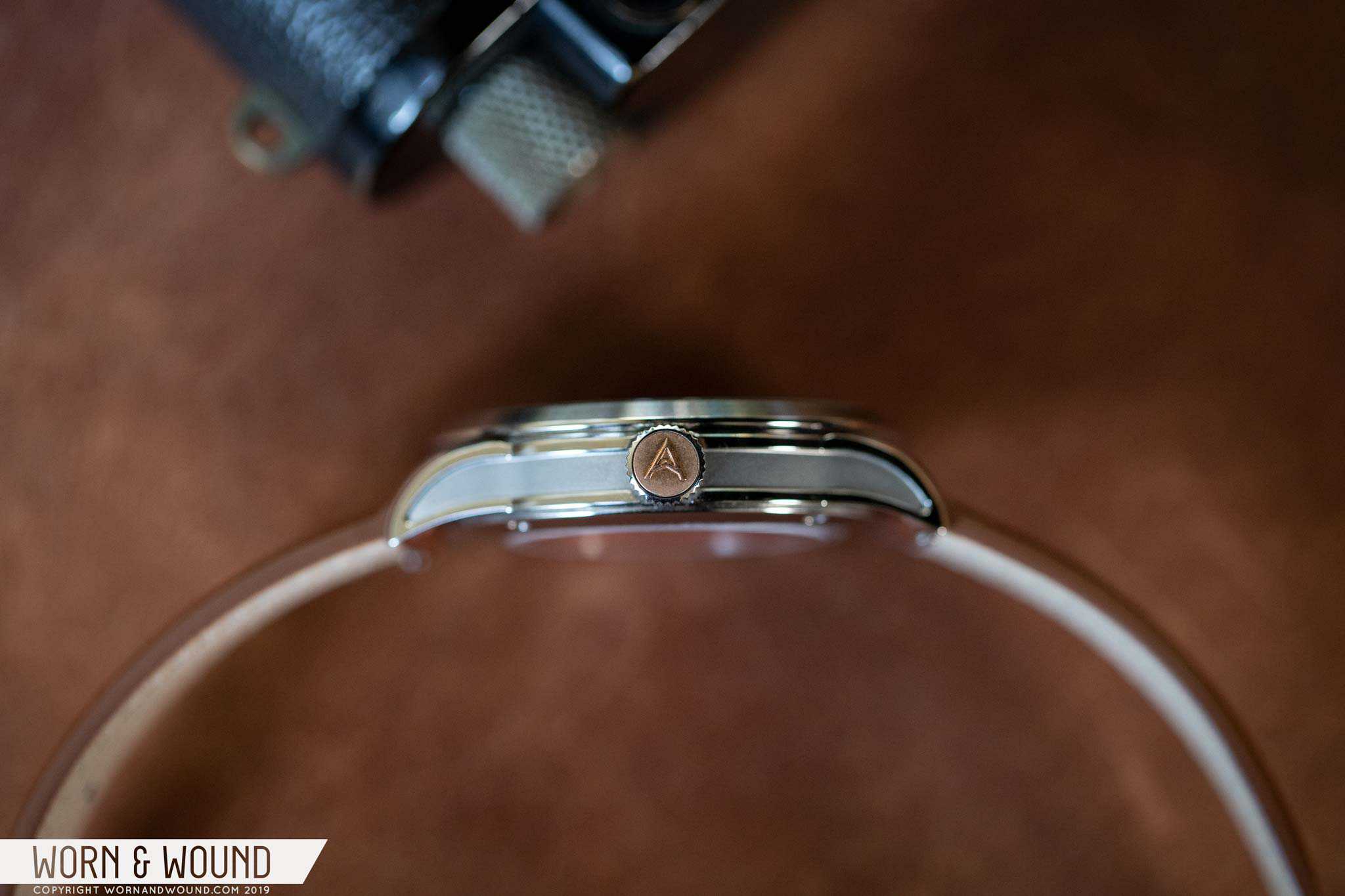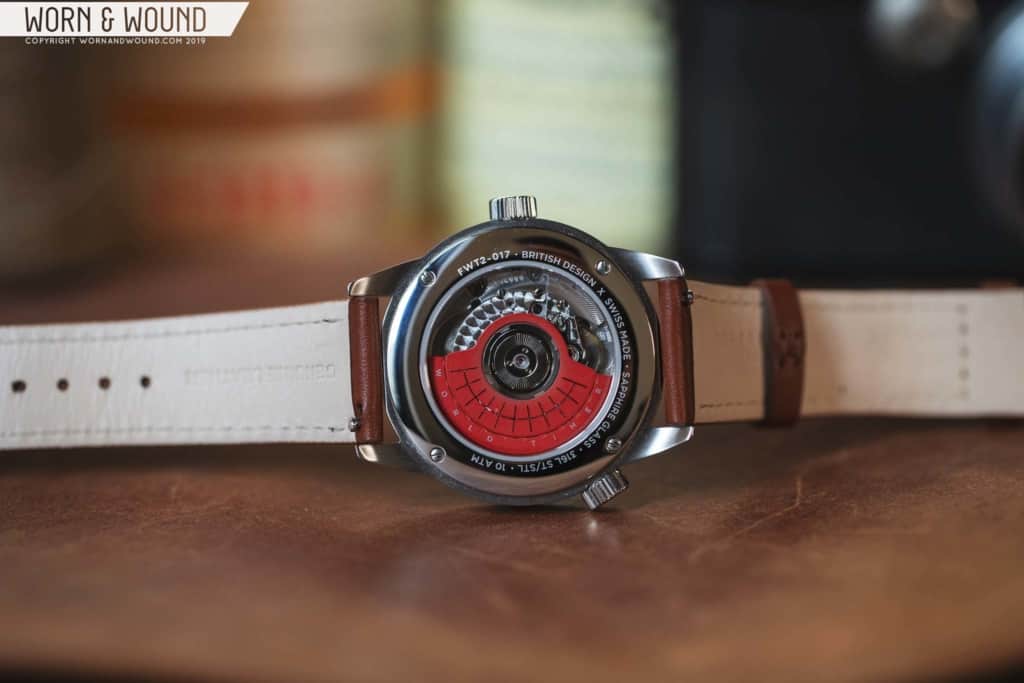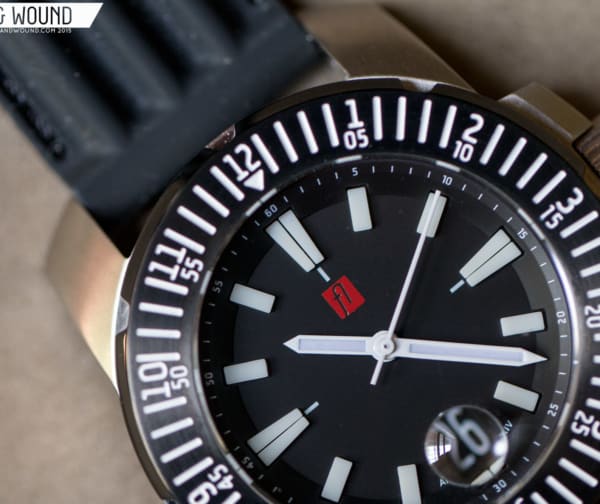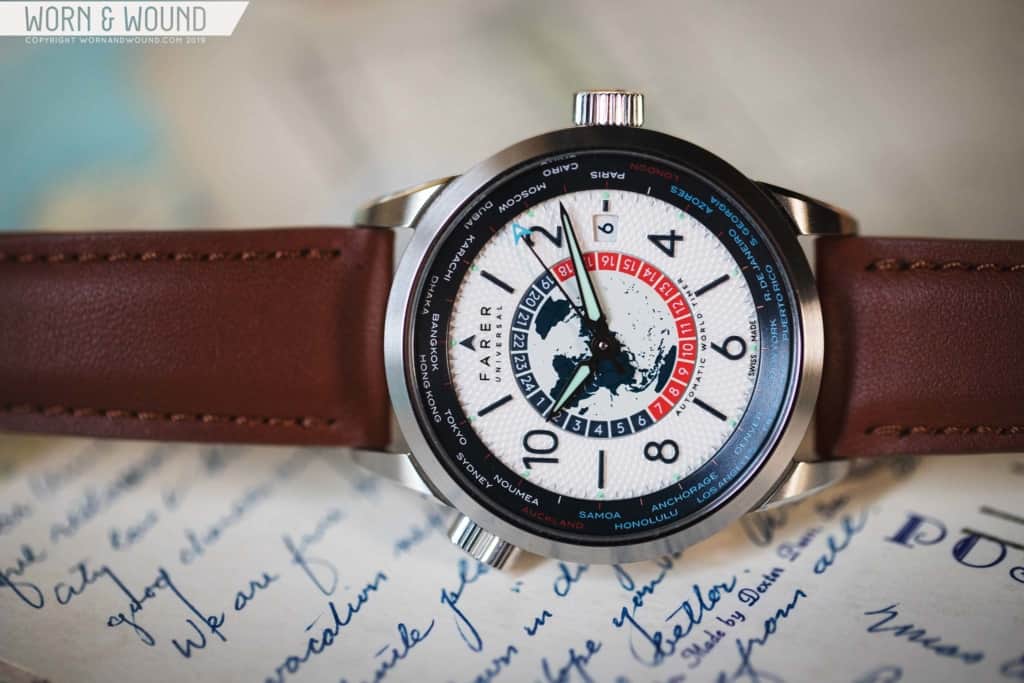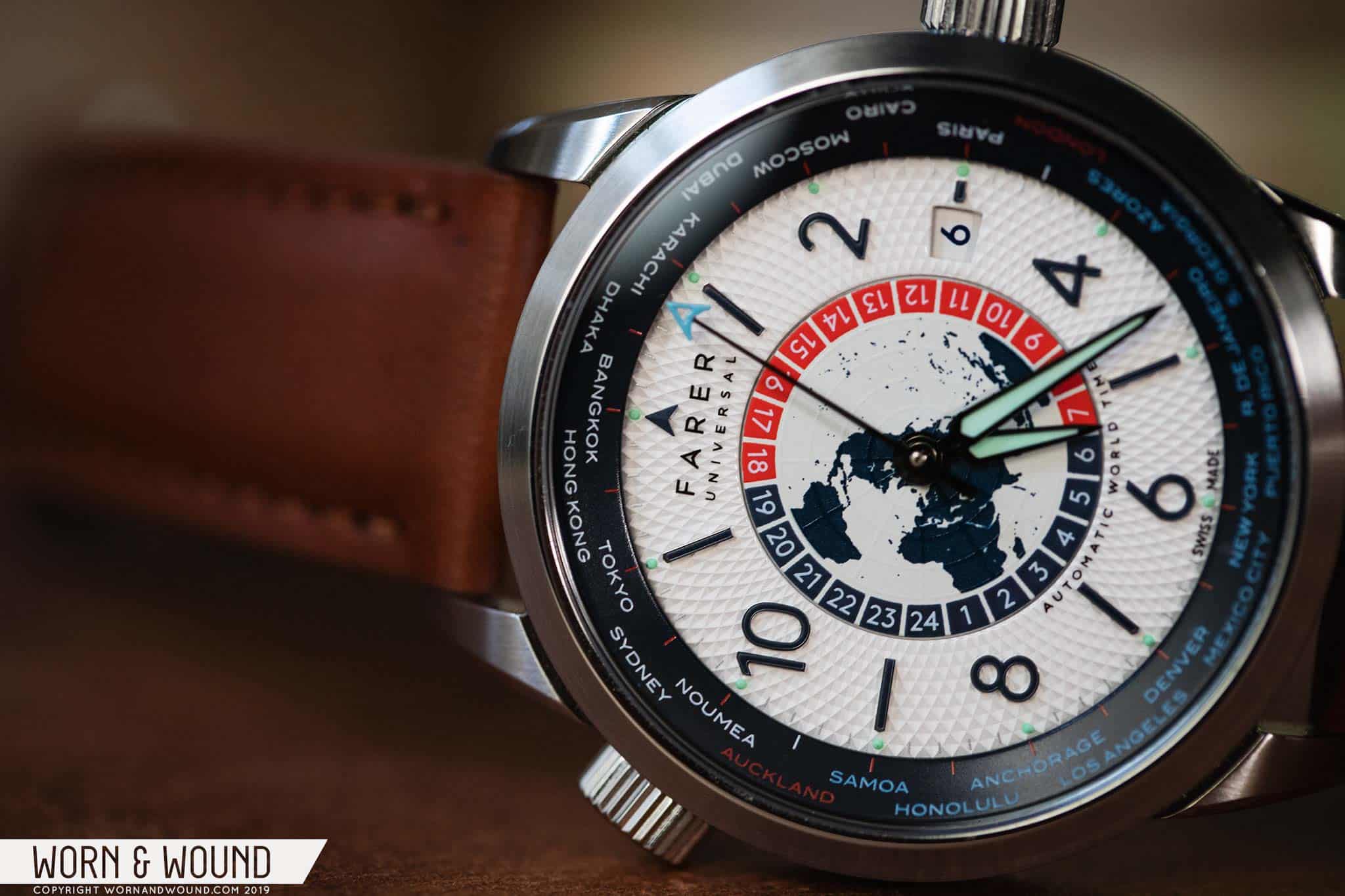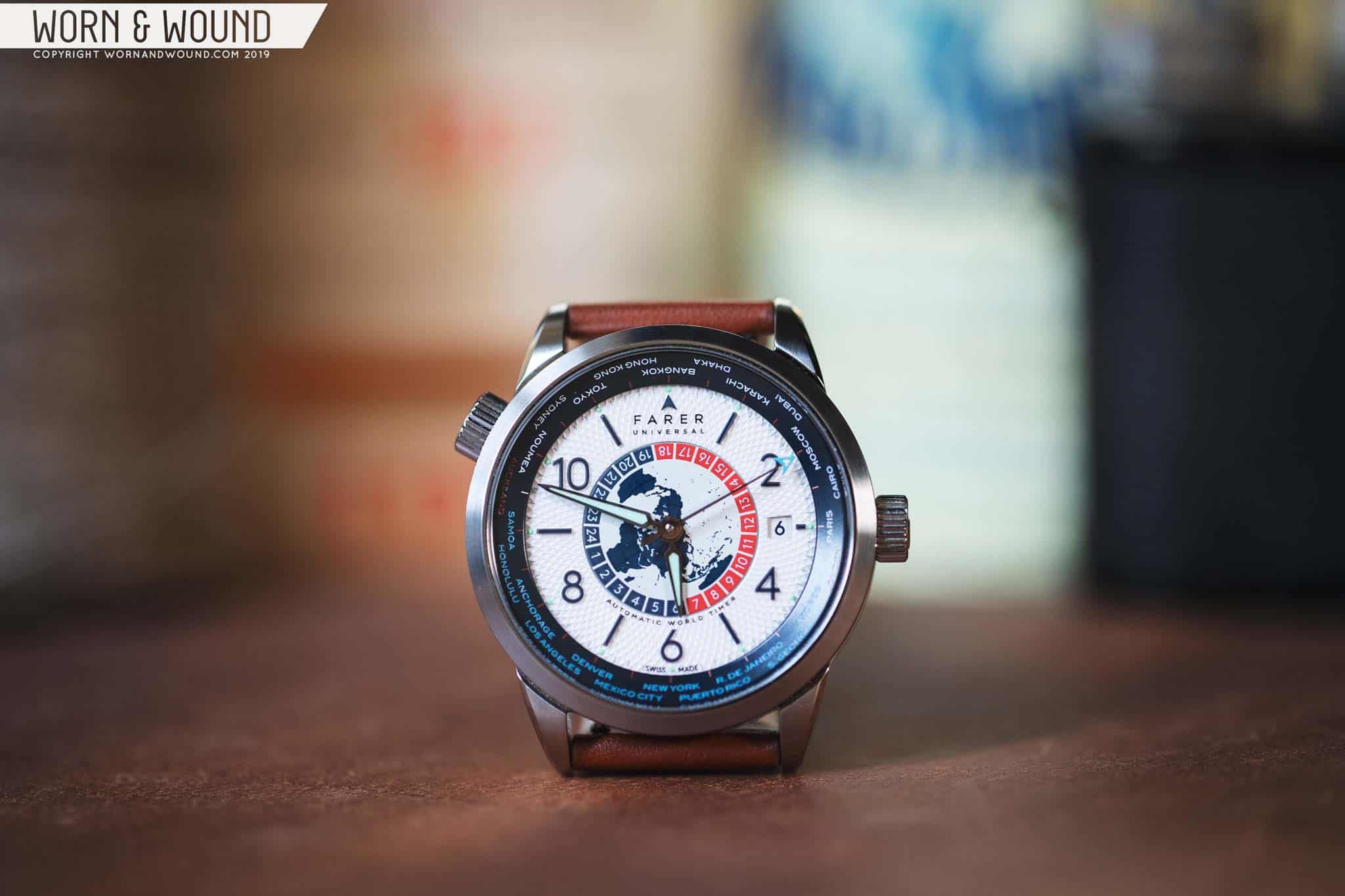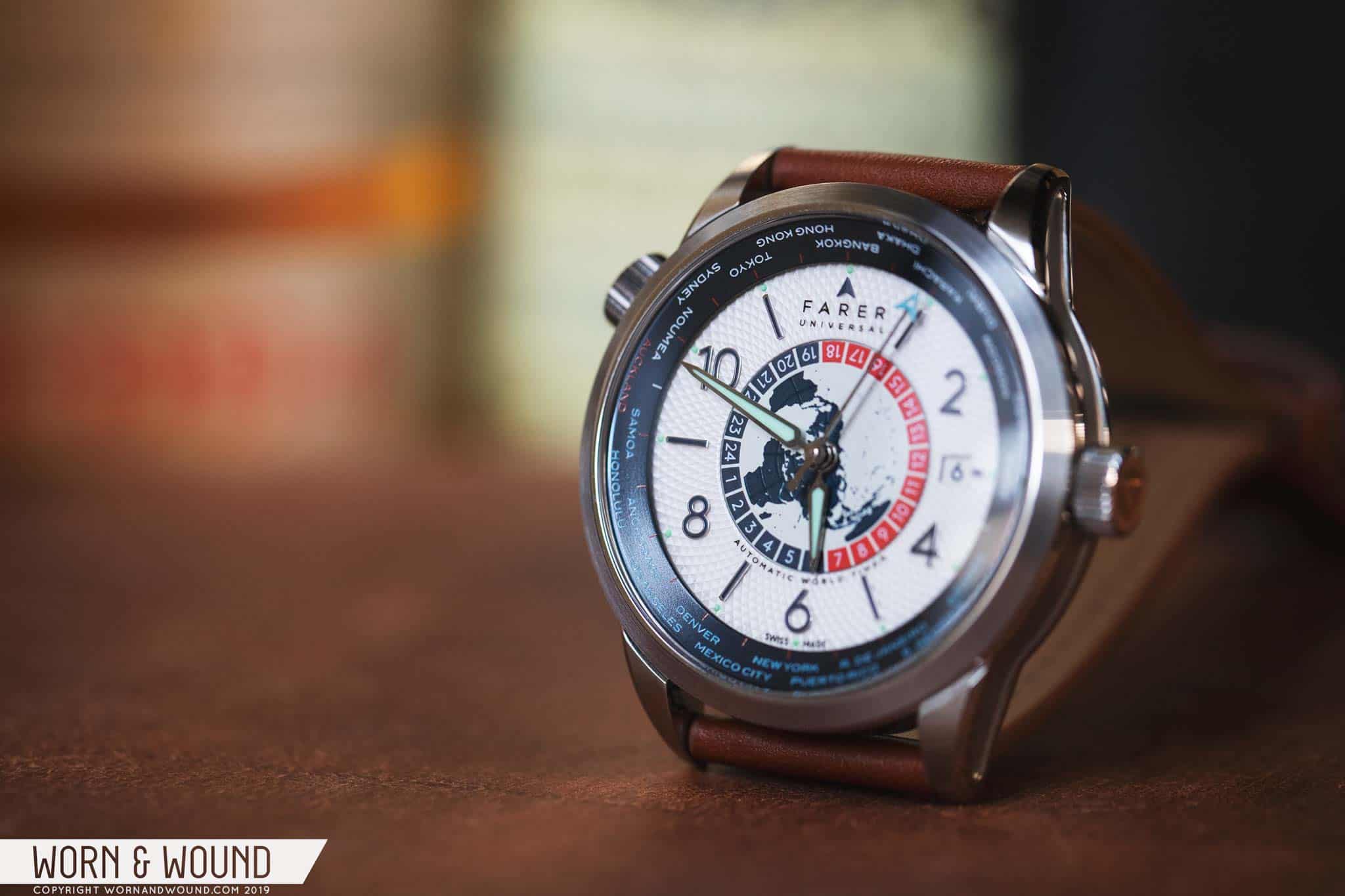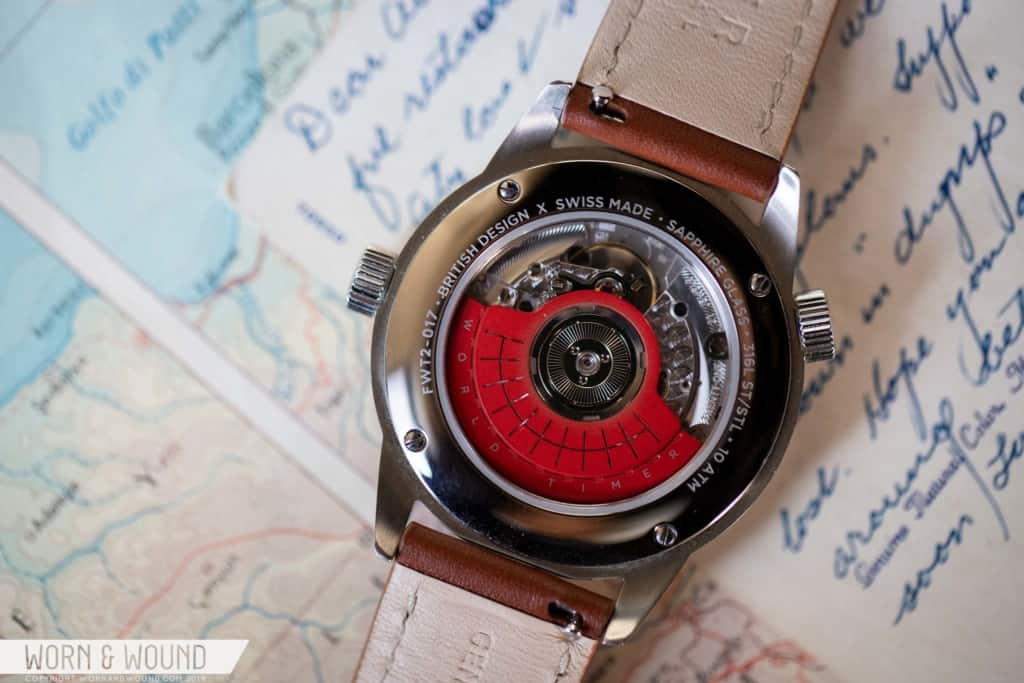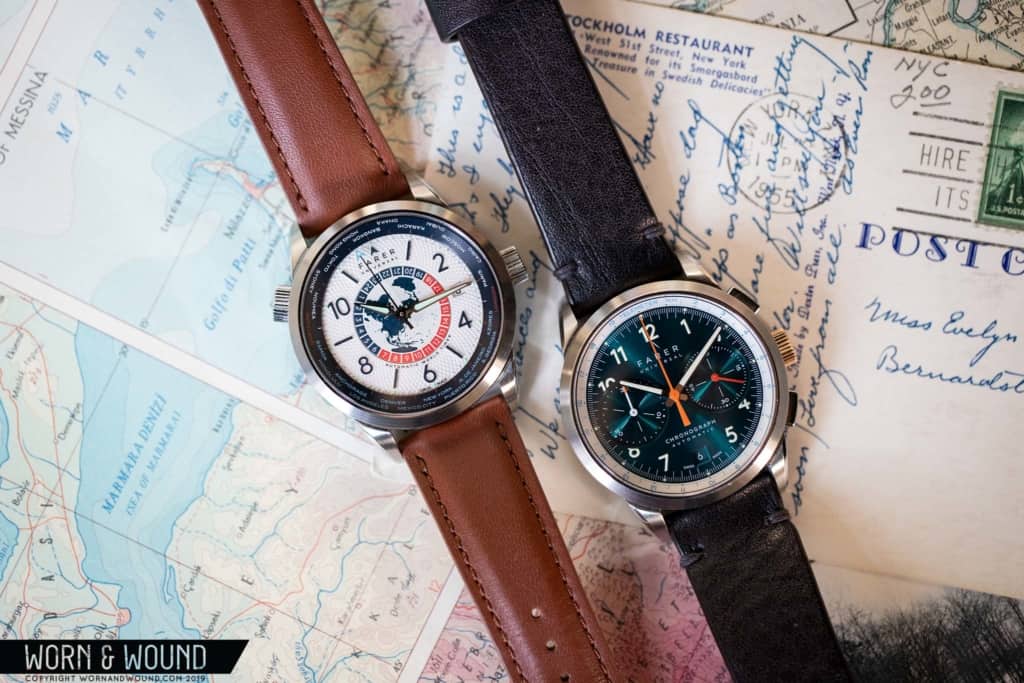I feel like it was just a few weeks ago that we published my review of the Farer Bernina chronograph, one of three exciting hand-wound chronographs the UK based outfit had just released. Unique, a solid value and universally well-received, they were another hit for the relatively young brand. Then, much to my pleasant surprise (ok, I kind of knew in advance) Farer dropped another, totally new series on day one of Windup Watch Fair NYC 2019, a trio of mechanical World Timers. Dubbed the Aldrich, Markham, and Roché, they are a very welcome addition to Farer’s growing catalog of mechanical timepieces that seem to satisfy a spot in their lineup for something more traditional.
A curious complication, they imply a certain lifestyle for their wearers that then implies a certain level of affluence. Not satisfied with merely tracking one or two time zones, a World Timer can track all 24 major (some parts of the world have half or even quarter-hour time zones) simultaneously while also indicating a major city or capital in said zone. Avid travelers, jet-set business types, cartographers and captains of industry alike, can really make use of such function. As such, the watches that typically have this complication tend to be more luxe and a bit on the fussy side. Movements that, out of the box, correctly display world time are also very uncommon, further pushing the watches up-market.
That said, World Timers did have a bit of an affordable “moment” a few years back, where a handful entered the market, a trend that has since waned. This left a nice opportunity for a brand willing to take a bit of a risk, as well as source the correct movements, to revive the genre. Clearly, Farer was up for the challenge, and with a supply of ETA 2893-1s, which function like their GMT sibling, the 2893-2, but with a disk beneath the other hands rather than a fourth hand, allowed them to create their new trilogy.
While Farer stayed mostly true to their concept of releasing three unique watches under the new genre, the World Timers are the most similar group they’ve released, sharing a common layout, if different executions. All feature rotating 24-disks at the center of their dials with illustrated maps and block hours, wide internal rotating bezels around the perimeter of their dials to coordinate the city with with world time disk, and all have a similar layout for their hour index, with bold numerals for the even hours alternating with batons for the odds. Colors and textures change, but all seem to have the same modern, masculine attitude. Today, I’ll be looking at the Markham, which stands out from the three with its pronounced white, textured dial.









 Featured Videos
Featured Videos





